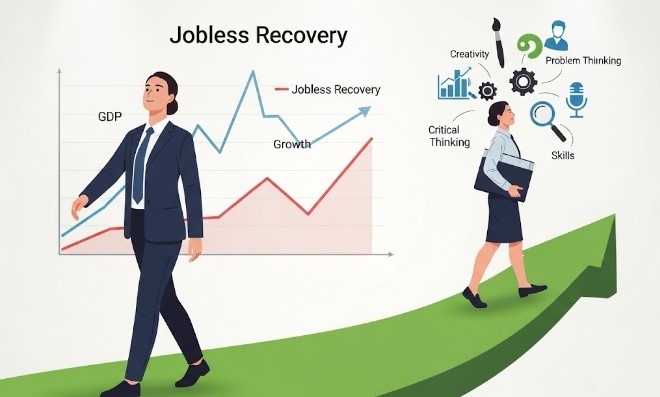📊 CPI Report Explained: How to Read It and Use It in Your Investment Strategy
Introduction
In the world of finance, there are a few reports that can shake markets in a matter of seconds — and the Consumer Price Index (CPI) report is one of them 📈. Whether you’re a forex trader, a stock market investor, a crypto enthusiast, or even a blogger looking to time your content strategy with economic trends, the CPI is a tool you can’t ignore.
In this guide, we’ll break down what the CPI report is, why it matters, how to read it, and most importantly, how you can use it to make better financial decisions. By the end, you’ll not only understand CPI like a pro, but you’ll also know how to use it to spot opportunities in your niche.
What Is the CPI Report?
The Consumer Price Index (CPI) is an economic indicator that tracks the average change over time in the prices paid by consumers for a “basket” of goods and services. This basket typically includes:
- 🥦 Food and beverages
- 🏠 Housing and rent
- 🚌 Transportation
- 👗 Clothing
- 💊 Medical care
- 📚 Education and communication
For example:
If the CPI shows a 3% increase compared to last year, it means the average cost of everyday goods and services has risen by 3% — a direct measure of inflation.
Why Is the CPI Important?
The CPI isn’t just a boring government statistic — it’s a market mover 🚀. Here’s why:
1. It Influences Central Bank Decisions
Central banks, like the U.S. Federal Reserve, use CPI to decide on interest rates.
- High CPI → Inflation is rising → Banks may raise interest rates to slow it down.
- Low CPI → Inflation is low → Banks may cut interest rates to stimulate spending.
2. It Impacts Currencies
Strong CPI data usually boosts a country’s currency because it signals a healthy (or overheating) economy.
3. It Moves Stock, Bond, and Commodity Markets
From Wall Street to crypto exchanges, CPI results can send prices soaring or crashing in minutes.
How to Read the CPI Report Like a Pro
When the CPI report is released, here’s what you should look for:
1. Headline CPI vs. Core CPI
- Headline CPI → Includes all items in the basket (including volatile food and energy prices).
- Core CPI → Excludes food and energy to show underlying inflation trends.
💡 Tip: Core CPI is often more reliable for predicting long-term inflation trends.
2. Month-over-Month (MoM) vs. Year-over-Year (YoY)
- MoM → Compares prices to the previous month.
- YoY → Compares prices to the same month last year.
3. Market Expectations vs. Actual Data
If CPI comes in higher than expected → markets might panic.
If CPI comes in lower than expected → markets might rally.
Real-Life Example
Let’s say the market expects U.S. inflation to rise by 0.3% for the month, but the actual CPI report shows a 0.6% increase.
- 📉 Stocks might drop because higher inflation could mean higher interest rates.
- 💵 The U.S. dollar might strengthen as traders expect tighter monetary policy.
- 🪙 Gold could rise because investors often see it as a hedge against inflation.
How Traders and Entrepreneurs Can Use CPI Data
For Traders & Investors
- Plan Ahead: Mark CPI release dates on your calendar.
- Adjust Positions: Reduce exposure before high-volatility announcements.
- Trade Reactions: Use the immediate volatility to find short-term opportunities.
For Bloggers & Online Entrepreneurs
- Content Timing: Publish finance-related articles around CPI release dates to catch search trends.
- SEO Optimization: Target keywords like “CPI report today” or “inflation data release”.
- Audience Engagement: Post updates on social media explaining the report in simple terms — people love quick breakdowns.
Practical Tips for Using CPI Data
✅ Stay Updated: Subscribe to your country’s official statistics agency (e.g., U.S. BLS, UK ONS).
✅ Compare Regions: If you operate globally, compare CPI data from different countries for market insights.
✅ Think Long-Term: One report won’t change the big picture — watch trends over several months.
Mini Case Study: CPI and the 2022 Inflation Surge
In 2022, global inflation spiked to levels not seen in decades. Each CPI release became a major financial event:
- U.S. CPI above 9% → Fed raised interest rates aggressively.
- Stock markets saw sharp declines on CPI release days.
- Bloggers covering inflation and cost-of-living topics saw massive traffic spikes.
This shows that knowing CPI trends can be a traffic and trading opportunity.
Frequently Asked Questions (FAQ)
Q1: When is the CPI report released?
➡ In the U.S., around the middle of each month by the Bureau of Labor Statistics.
Q2: Is CPI the same in every country?
➡ No, the basket of goods and calculation methods vary by country.
Q3: Can CPI predict a recession?
➡ Not directly, but consistently high inflation can lead to economic slowdowns.
Conclusion & Call to Action 🚀
The CPI report is more than just a number — it’s a window into the economy’s health and a tool for strategic decision-making. Whether you trade stocks, invest in crypto, write finance blogs, or run an online business, understanding CPI can give you a competitive edge.
💬 Now it’s your turn — Do you check the CPI report regularly? How has it influenced your investment or business decisions? Share your thoughts in the comments, and don’t forget to subscribe for more market insights!






Leave a Reply